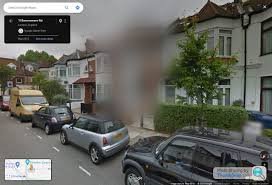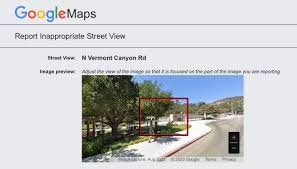
- calendar_month September 5, 2024
- folder Community Engagement
Sharing Tags
Blurring Your Home, Digital Footprint, Google Maps, Home Security, Home-Based Business, JohnHart, JohnHart Real Estate, Nathan Derry, Nathan Derry JohnHart, Nathan Derry Realty, Nathan Derry Recommends, Nathan Derry Tips, Nathan Derry, JohnHart Real Estate, Online Privacy, Property Visibility, Real Estate Marketing, Real Estate Privacy

As privacy concerns become more prevalent in the digital age, homeowners are increasingly considering the option to blur their homes on Google Maps. While this feature offers a layer of privacy, it also comes with potential drawbacks, particularly for those in the real estate market. As a Realtor with JohnHart Real Estate, I often get asked about the implications of this decision. Here’s a detailed look at the pros and cons of blurring your house on Google Maps, how it’s done, and what it means for both homeowners and potential buyers.
What Does It Mean to Blur Your House on Google Maps?

Google Maps and Google Street View provide a detailed, street-level view of homes and neighborhoods around the world. By default, anyone using these services can see your home, including its exterior, landscaping, and surrounding area. However, Google allows users to request that their homes be blurred, meaning that the image of the house will appear as an obscured, pixelated area on the map.
How to Blur Your House on Google Maps
If you decide to blur your home, the process is relatively straightforward:
- Open Google Maps: Go to Google Maps and enter your home address.
- Access Street View: Drag the yellow Street View icon (Pegman) to the location of your home.
- Report a Problem: Click on “Report a problem” at the bottom right corner of the screen.
- Select the Area to Blur: You’ll be prompted to adjust a red box over the image you want blurred (in this case, your home).
- Submit the Request: Select “My home” from the dropdown menu, explain why you want the image blurred, and submit the request.
Once Google processes your request, which can take several days, the image of your home will be permanently blurred on Street View. It’s important to note that this action is irreversible; once your house is blurred, it cannot be unblurred.
The Pros of Blurring Your House on Google Maps
-
Increased Privacy: The most obvious benefit of blurring your home is increased privacy. By obscuring your house on Google Maps, you prevent people from easily viewing the exterior of your property, which could be beneficial if you’re concerned about privacy or security.
-
Protection from Potential Risks: Blurring your home can reduce the risk of potential intruders or stalkers identifying and targeting your property. This is especially important for high-profile individuals or those with specific security concerns.
-
Control Over Your Online Presence: By blurring your house, you take control over how much of your property is visible online, which can be part of a broader strategy to manage your digital footprint.
The Cons of Blurring Your House on Google Maps
-
Reduced Visibility in the Real Estate Market: For homeowners looking to sell, visibility is key. Blurring your home can make it less appealing to potential buyers who might rely on Google Maps to get a sense of the property and its surroundings. A blurred house might raise red flags or deter interest.
-
Impact on Wayfinding: If you’re running a home-based business or regularly have visitors, blurring your home can make it harder for people to find your location using Google Maps. The lack of visual cues might complicate directions and create confusion.
-
Permanent Decision: Once you blur your home on Google Maps, the decision cannot be reversed. This means that if your circumstances change—such as deciding to sell your home—you won’t be able to restore the image for better visibility.
Why Did Google Introduce the Blurring Option?
Google introduced the blurring feature in response to privacy concerns from users. As Google Street View expanded, so did the concerns about how much personal information was being made publicly available. The blurring option allows users to maintain a degree of privacy and control over what is visible online. This feature is part of Google’s broader efforts to balance the benefits of its services with the need to respect individual privacy.
Is Blurring Your Home the Right Choice?

Deciding whether to blur your home on Google Maps depends on your specific needs and concerns. For those prioritizing privacy and security, blurring offers a way to protect their home from unwanted attention. However, for homeowners looking to sell or those who rely on accurate location data for visitors or business purposes, the cons may outweigh the benefits.
As a Realtor with JohnHart Real Estate, I recommend carefully considering the impact this decision might have on your property’s visibility and accessibility. If you’re unsure, it’s worth discussing your options with a real estate professional who can help you make an informed decision that aligns with your goals.
As Nathan Derry with JohnHart Real Estate, I’m here to help you navigate all aspects of buying or selling your home, including making informed decisions about your online presence.
All the best,
Nathan Derry, Realtor

📍JohnHart Real Estate
📞(424) 303-0440
📧 nathan@jhagents.com
👨🏽💻 itsnathanderry.com
Interested in seeing a property or one of my off market properties in person? Contact me today! Who you hire matters!!!
Ready to make the best move of your life… let’s chat today!
